A truly masterful interior isn’t just about color or arrangement; it is an experience rooted in the senses. As professional interior designers, we’ve seen countless rooms that feature beautiful furnishings and a sophisticated color palette, yet still feel somehow flat or cold. The missing ingredient? Texture. Incorporating woven texture interior design can transform a space, adding depth and warmth.
Key Takeaways
- Woven texture interior design adds depth and warmth, countering minimalist aesthetics that can feel flat.
- Raffia, a versatile and sustainable material, enhances modern design with organic sophistication and various types available.
- Designers incorporate raffia through creative layering with luxe finishes, moving beyond traditional applications in furniture.
- Other woven materials like paper cord and sculpted wood also contribute to adding depth in interior spaces.
- BY DESIGN helps curate and balance textures, ensuring a seamless integration of woven elements in your décor.
An exciting and transformative trend today is the deliberate introduction of organic, woven materials to add badly needed depth. This is the heart of woven texture interior design, a idea that transforms a sleek, two-dimensional space into a rich, layered environment that invites you to reach out and touch it. At BY DESIGN, we call this the art of achieving “Layers of Luxe.”
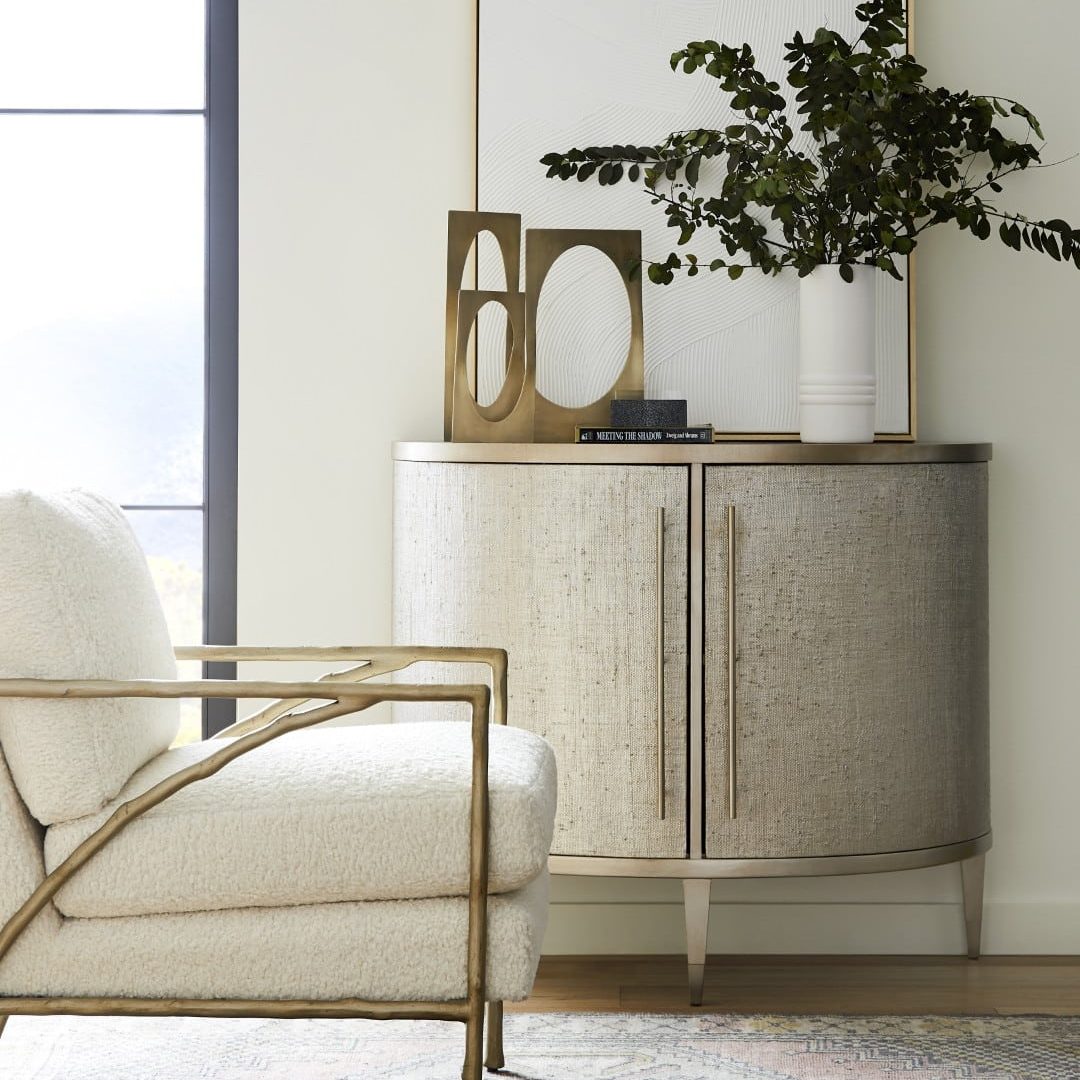
Why Might Your Home Need Woven Textures?
Contemporary design has long celebrated minimalism, clean lines, and neutral color schemes. While this aesthetic is effortlessly sophisticated, its reliance on smooth, unadorned surfaces—such as polished stone, glass, and highly lacquered wood—can strip a room of its warmth and soul.
Woven texture interior design serves as the perfect counterpoint. It introduces visible, tactile surfaces that catch and refract light, creating subtle shadows and highlights. Therefore, a piece of furniture ceases to be just a solid block of color; it becomes a dynamic focal point, immediately making the entire room feel more complex, inviting, and expensive.
What is Raffia and Why is it a Star Material?
Raffia is a natural, versatile fiber derived from the leaves of the raffia palm. This sustainable material is celebrated for its flexibility, durability, and inherently organic feel.
The beauty of raffia in modern design lies in its chameleon-like ability to blend sophistication with a grounded, natural warmth. When searching for this material, you will generally find three types:
- Natural Raffia: The pure, biodegradable fiber known for its slight texture variations and eco-friendly nature.
- Paper Raffia: Made from wood pulp, it offers a consistent, even texture and, crucially, is available in a vast spectrum of colors, offering flexibility that natural fibers can’t always provide.
- Synthetic Raffia: While BY DESIGN prefers natural or paper options, synthetic versions offer extreme durability, making them suitable for high-wear areas or specific outdoor applications.
How are Designers Utilizing Raffia Today?
Leading design houses have embraced raffia as a luxury finish. Our partners at Vanguard, for instance, are driving this trend, as they recognize that “texture is a must-have element” to convey effortless elegance in modern spaces dominated by neutrals.
This isn’t your grandmother’s wicker furniture; this is Raffia Redefined:
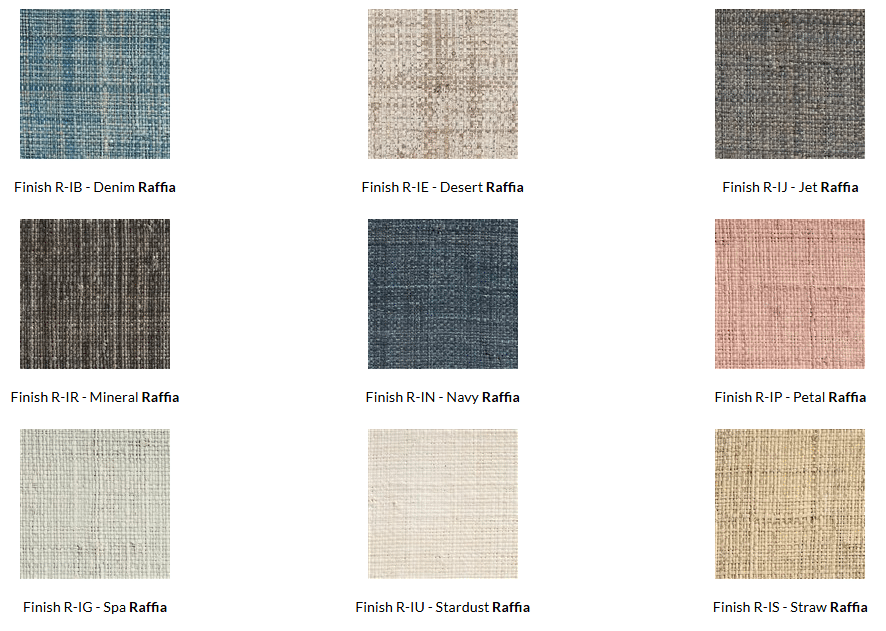
Color as Texture: Vanguard offers a palette of up to 13 colors—from soothing Spa to vibrant Denim—allowing us to introduce texture without compromising your color story. This turns a simple cabinet into a complex piece of art.
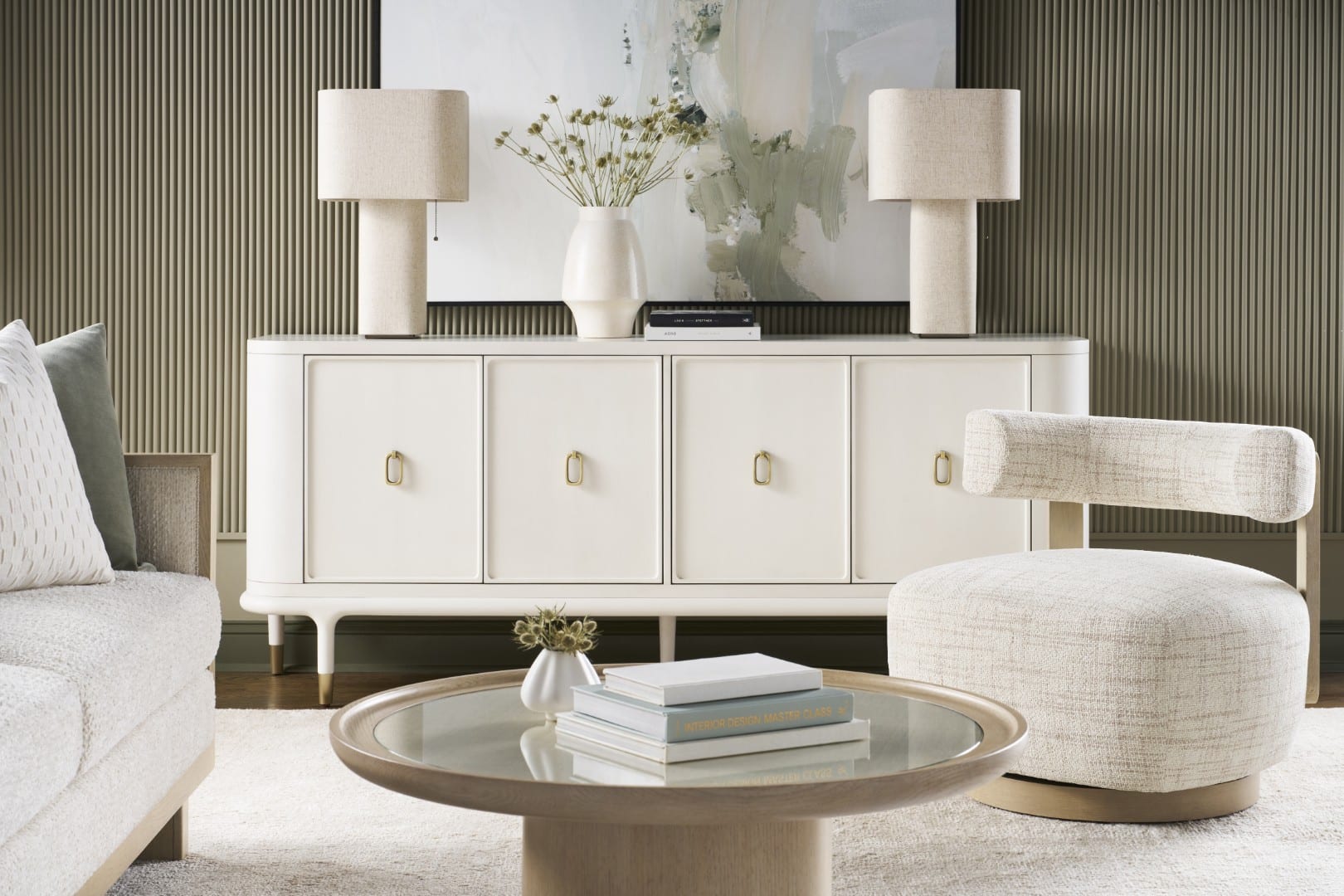
Layering with Luxe Finishes: The true magic happens when raffia is contrasted with other materials. The “Reveal” series by Vanguard, for example, combines the organic beauty of woven raffia with the sleekness of rich woods, honed marble, and metal accents. This juxtaposition is what creates that sophisticated, multi-layered look.
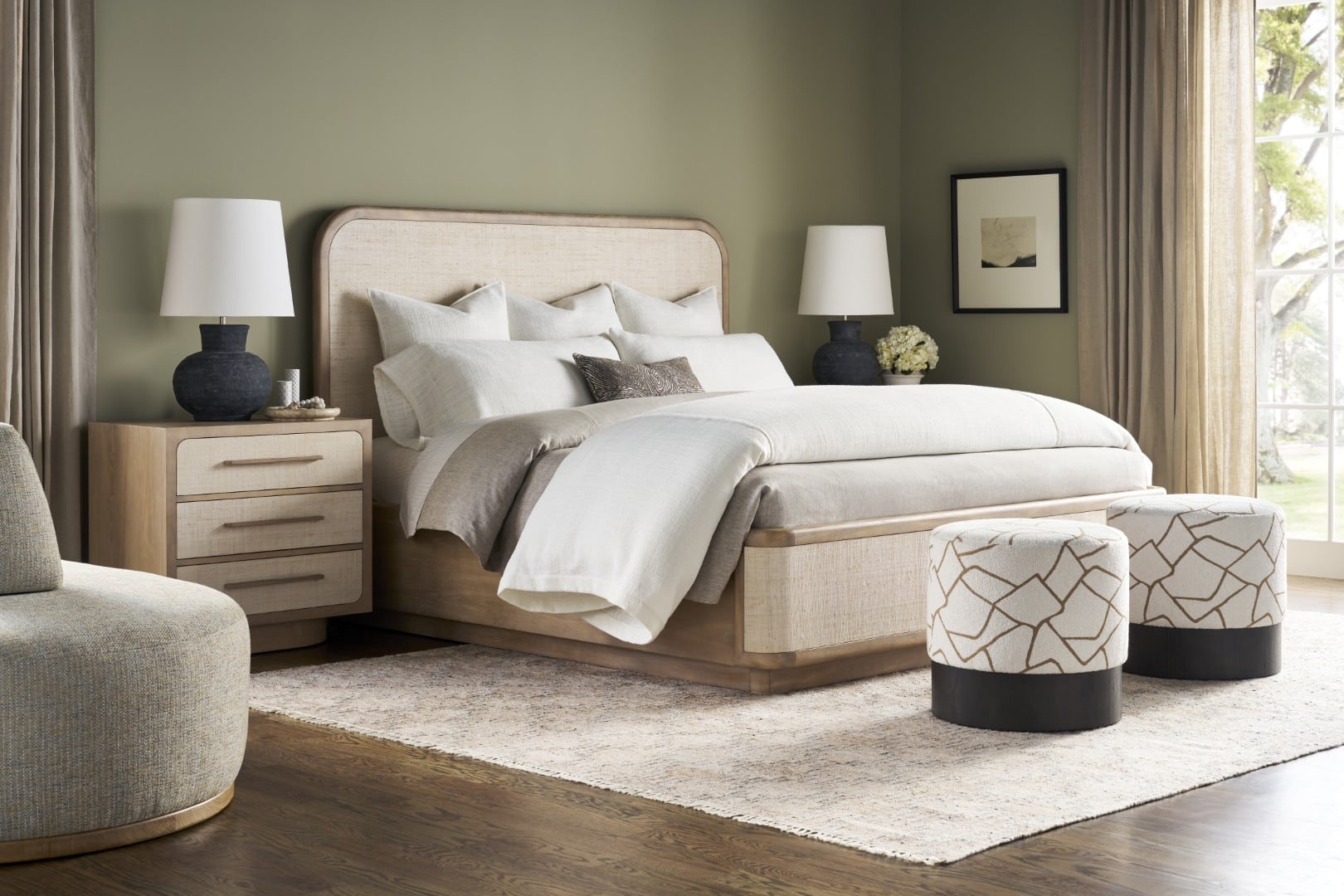
Applying to New Silhouettes: We now see raffia moving far beyond occasional tables. It’s being masterfully applied to headboards, large storage pieces, and drawer fronts, ensuring that the most prominent elements in a room contribute to its textural narrative.
What Other Woven Materials Can Add Depth?
While raffia is fantastic, the world of textural materials offers many other exciting avenues for woven texture interior design.
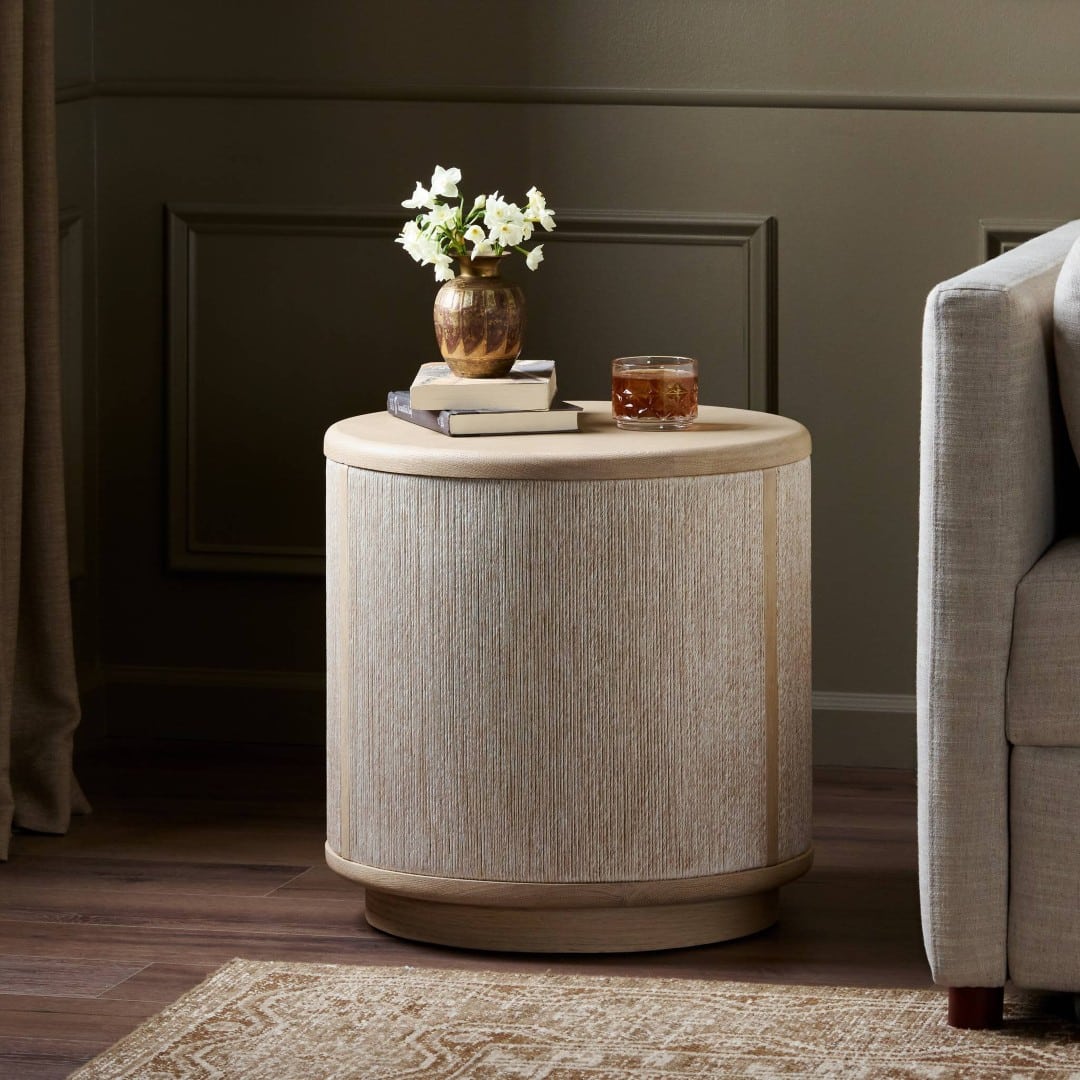
- Woven Paper Cord: This material provides a tighter, more deliberate weave than raffia. It’s often used in chair seating but translates beautifully to door and cabinet inserts. Furthermore, it can be finished or stained to perfectly match a wood tone, lending an understated textural element without the casual feel of rattan.
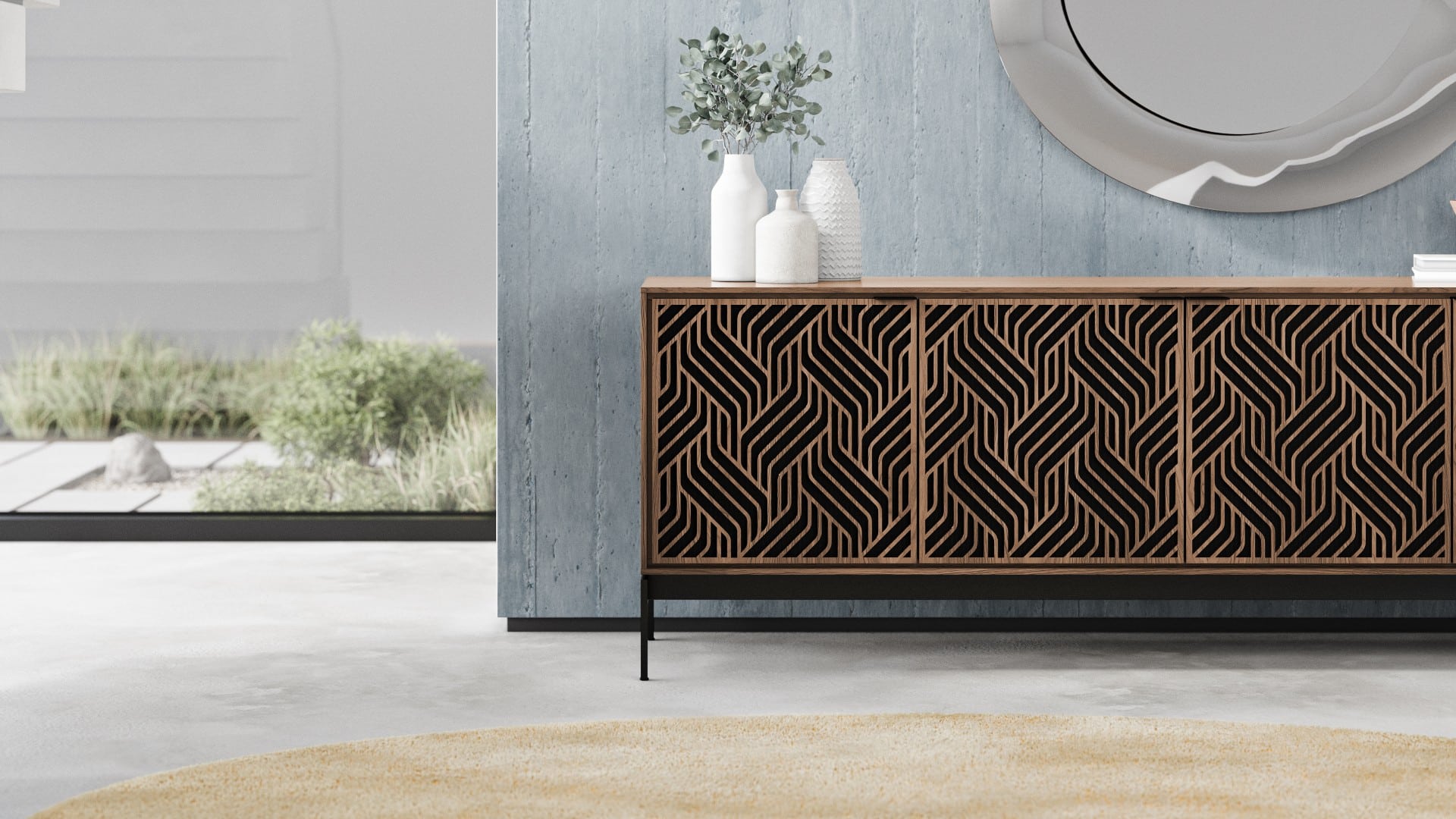
2. Sculpted Wood Weaves: For a dramatic and permanent application, a select number of manufacturers are carving the pattern of a weave into wood itself. A perfect example is the stunning Elements media cabinet, which features an intricate weave pattern executed in durable oak. This brilliant design technique allows you to introduce the organic feel of weaving with the permanence and weight of solid wood.
3. Linen and Jute: We mustn’t forget the textiles. Layering chunky jute rugs with finely woven linen drapery and throws is the most accessible way to participate in this trend, immediately adding a softness and depth that polished cottons cannot achieve.
How Can BY DESIGN Help You Execute This Trend?
Integrating texture successfully requires a discerning eye and a careful balance of materials. Too much woven material can make a space feel “beachy” or rustic; too little, and the effect is lost.
At BY DESIGN, our winning approach is to create a seamless tapestry of finishes. We possess the extensive knowledge necessary to:
- Curate the Perfect Pieces: We know how to select the right raffia type for the right environment—natural raffia for a living room console, or a high-durability woven paper cord for a busy entry cabinet.
- Master the Layering: We ensure that the woven pieces are balanced by contrasting materials, such as a sleek velvet sofa or a polished brass lamp. This tension between smooth and rough is the key to creating a truly sophisticated, bespoke room.
- Source with Confidence: We work directly with vendors who represent the highest quality of this craft, guaranteeing that your new raffia or woven pieces are not just on-trend, but are also investment-grade furniture meant to be cherished for decades.
Summary
The current movement in interior design proves that depth and sophistication are achieved through the sense of touch, not just sight. The trend of embracing natural, woven texture interior design—with materials like raffia, woven paper cord, and sculpted wood—is the ultimate way to warm up a modern home and create an environment that feels collected, curated, and wonderfully tactile. Don’t let your beautiful space fall flat; let us help you weave a story of luxe, inviting texture into your home.
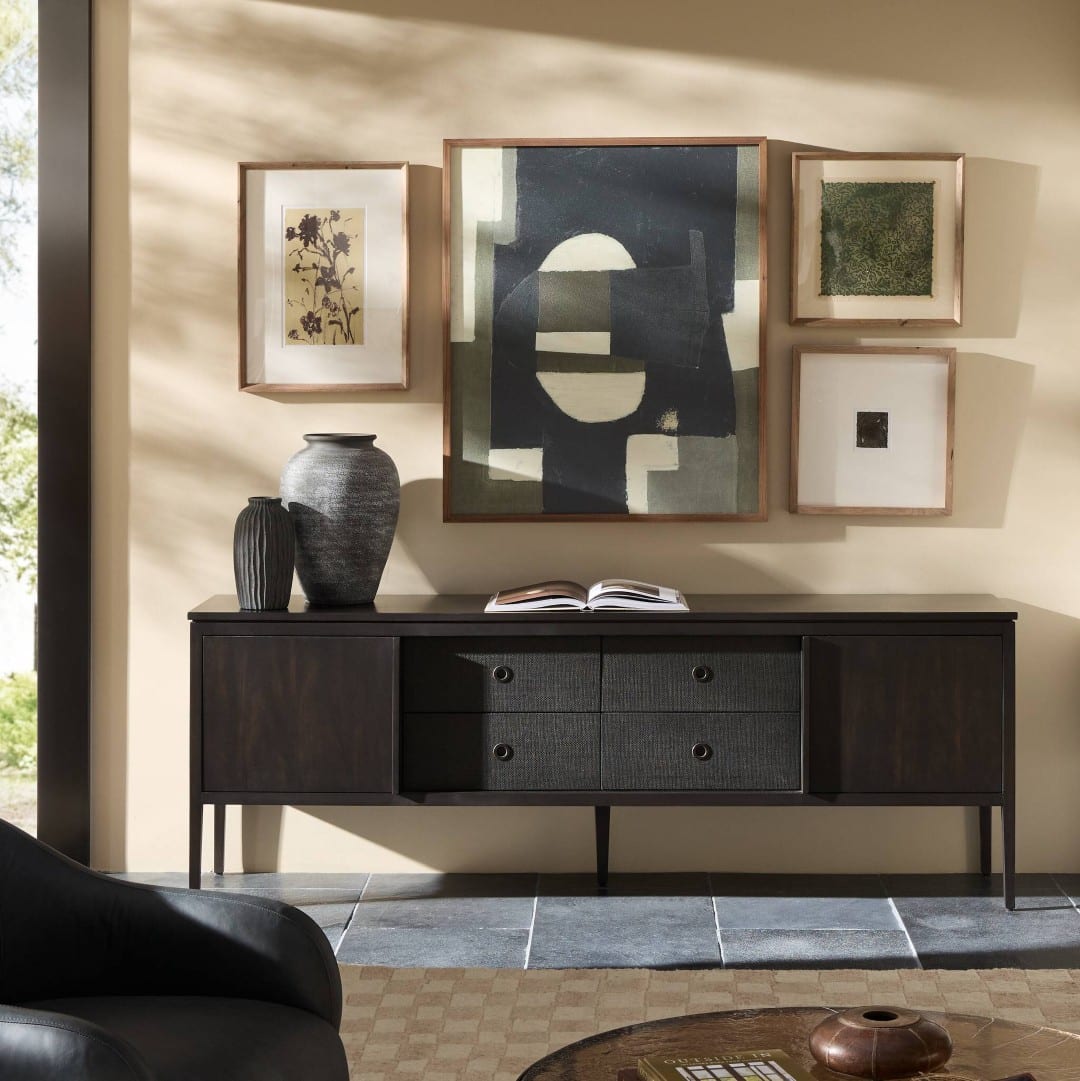
FAQ: Your Woven Texture Questions Answered
Q: Is raffia a durable material for furniture?
A: Yes, high-quality natural raffia is known for its durability and flexibility. However, its longevity largely depends on its application. When used on cabinet door fronts or decorative panels, it is extremely durable. For high-traffic surfaces like tabletops, a lacquer or glass top is recommended, or you can opt for the more durable, stain-treated paper and synthetic alternatives that maintain the beautiful texture while offering enhanced protection.
Q: How do I incorporate woven texture without making my home look too “coastal” or bohemian?
A: The key is to use it as a textural accent against a modern backdrop. Avoid pairing woven furniture exclusively with light blue and white color schemes. Instead, anchor your space with sophisticated materials like dark wood, matte black finishes, or deep, rich colors (think navy, charcoal, or emerald). When a raffia console is placed between two sleek metal floor lamps, the look immediately becomes sophisticated and transitional, not strictly coastal.
Q: What is the best way to clean and care for raffia?
A: Generally, raffia should be dusted regularly using a soft brush or a vacuum with a brush attachment. Avoid excessive moisture, as it can weaken the fibers; spot clean any stains immediately with a barely damp cloth and mild soap, ensuring the area is dried immediately afterward. Always check with the manufacturer’s care instructions for specific furniture pieces.
You might also enjoy these posts:


